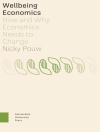‘If a student researcher had only one handbook on their bookshelf, Miller and Salkind′s Handbook would certainly have to be it. With the updated material, the addition of the section on ethical issues (which is so well done that I′m recommending it to the departmental representative to the university IRB), and a new Part 4 on ‘Qualitative Methods’, the new Handbook is an indispensable resource for researchers.’
–Dan Cover, Department of Sociology, Furman University
‘ I have observed that most instructors want to teach methodology ‘their way’ to imbue the course with their own approach; Miller-Salkind allows one to do this easily. The book is both conceptually strong (e.g., very good coverage of epistemology, research design and statistics) and at the same time provides a wealth of practical knowledge (scales, indices, professional organizations, computer applications, etc.) In addition, it covers the waterfront of methodology.’
–Michael L. Vasu, Director of Information Technology, North Carolina State University
‘A unique and excellent reference tool for all social science researchers, and a good textbook for graduate students and senior year undergraduate classes. These students are about to enter the real life of research, and need a handy and comprehensive tool as a starting point that offers shortcuts for getting into real research projects. For a small project, the book offers enough information to get the project started. For big projects, the book is ideal for information on where to look for things and examples.’
–Jianhong Liu, Department of Sociology, Rhode Island College
The book considered a ‘necessity’ by many social science researchers and their students has been revised and updated while retaining the features that made it so useful. The emphasis in this new edition is on the tools graduate students and more advanced researchers need to conduct high quality research.
Features/Benefits:
- Provides step-by-step instruction for students′ research training by beginning with how to find a creative idea, a middle-range theory, and initial hypothesis and proceeds through design, proposal, collection and analysis of data followed by writing, reporting and publication
- Section on scales and indices are organized so that readers can quickly locate and find the type of scale or index in which they may be interested
- All sections are now followed by useful and well-considered reference sections so that readers can read more about each topic
- Includes updated coverage on new scales, internal and external validity, and new analytic techniques with extensive references on each
- Presents extensive coverage of how to prepare manuscripts for publication, including a list of all journals covered by Sociological Abstracts along with the editorial office address and URL for each entry
- Discusses the importance of policy research with presentation and discussion of specific models as an adjunct to both applied and basic research techniques
- Provides extensive coverage of funding opportunities including those offered by the National Institutes of Health, the National Science Foundation, and a directory of private funding sources including relevant contact information
New to this edition:
- New Part 4 by John Creswell and Ray Maietta provides a comprehensive introduction to qualitative methods including a review of existing computer applications for collecting and analyzing data
- New and more current reviews and commentaries have replaced dated or no longer relevant excerpts
- Thousands of new references on the assessment of important sociological variables as well as references to such topics as statistical analysis, computer applications, and specific topics
- Thoroughly updated information on the use of computers and online research techniques, including beginning and intermediate material about the Internet and its use by the modern research scientist
- Coherent and thoughtful review of the most popular statistical analysis software packages
- New guidelines and discussion of ethical practices in social and behavioral science research, including extensive coverage of institutional review board procedures and activities
- Expansion of social indicators to include international coverage
Plus, there is an extensive and well-organized table of contents with four levels of headings; and, for the first time in the history of the book, a comprehensive index.
สารบัญ
Preface
Acknowledgements
PART 1.UNDERSTANDING BASIC, APPLIED, AND EVALUATION RESEARCH
1.1 Defining the Characteristics of Basic, Applied, and Evaluation Research
1.2 The Orientation and Commitment of The Basic Researcher
1.3 The Orientation and Commitment of the Applied Researcher
1.4 The Orientation And Commitment Of The Evaluation Researcher
1.5 General Readings on Basic, Applied and Evaluation Research
PART 2: BASIC RESEARCH DESIGN
2.1 Basic Guide For The Design Of A Social Research Proposal
2.2 Formulating A Research Problem
2.3 Evaluating Research Studies
2.4 Elements of Research Design
2.5 Choosing a Research Design
2.6 How Science Is Built
Importance of Conceptual Definition and Theory Formulation – G. J. Di Renzo
Assumptions Underlying the Application of the Scientific Method – G. Sjoberg, & R. Nett
Dilemmas of the Researcher and the Distinctiveness of Behavioral Science – A. Kaplan
2.7 The Impact Of Sociological Theory On Empirical Research
Empirical Generalizations in Sociology – R. K. Merton
2.8 Bridging The Gap Between The Languages Of Theory And Research
Causal Inferences in Non-Experimental Research – H. M. Blalock, Jr.
2.9 Criteria for Judging the Usefulness of an Hypotheses
Methods in Social Research – W. J. Goode, & P. K. Hatt
2.10 Science: Simultaneously Observational, Experimental, and Historical
Science: Observational, Experimental, Historical – R. Siever
2.11 Guides for Design, Model Building, and Large-Scale Research
Some Observations on Study Design – S. A. Stouffer
2.12 The Role Of Models In Research Design
2.13 General Considerations Of Research Design
2.14 Factors Jeopardizing Internal And External Validity Of Research Designs
Experimental and Quasi-Experimental Designs for Research – D. T. Campbell, & J. C. Stanley
2.15 Sampling
2.16 A Selected Bibliography On Basic Research and Research Design
Part 3. APPLIED AND EVALUATION RESEARCH
3.1 A Rationale for Applied Sociology as it Relates to Policy-Making
3.2 Applied Research Design
3.3 Fitting An Applied Research Design To A Problem
3.4 The Mood Of The Academic Researcher Engaged In Applied Research
3.5 The Application of Successful Applied Research through Policy Analysis
Policy Analysis – R. Haskins
3.6 Bibliography On Applied Sociology, Knowledge Utilization, And Policy-Making
3.7 Evaluation Research As A Process
3.8 Ethical Practices in Research
PART 4. QUALITATIVE RESEARCH – J. Cresswell, & R. C. Maiette
4.1 Introduction
4.2 Systematic Inquiry Approaches
4.3 A Conceptual Overview of Five Inquiry Approaches
4.4 Narrative Research
4.5 Phenomenology
4.6 Grounded Theory Research
4.7 An Ethnography
4.8 The Case Study
4.9 Qualitative Data Analysis Software
4.10 Conclusion
4.11 References
4.12 Qualitative Research Methodology: A New Perspective
The New Frontier in Qualitative Research Methodology – E. W. Eisner
4.13 Further Resources for Qualitative Researchers
PART V GUIDES TO METHODS AND TECHNIQUES OF COLLECTING DATA IN LIBRARY, FIELD, AND LABORATORY SETTINGS: SOCIAL SCIENCE DATA LIBRARIES AND RESEARCH CENTERS
5.1 Outline Guide To Situses, Principal Methods, And Techniques Of The Social Science Researcher
5.2 A Review of Print and Online Social Science Research Resources
5.3 United States Bureau of the Census and other Federal Sources of Information
5.4 Fed Stats
5.5 Data Mining through Federal Resources
5.6 General Databases of Bibliographic Material
5.7 Using Search Engines
5.8 Microfiche as an Archival Medium
5.9 Online Computer Library Center
5.10 Documentary Resources Available In The Library
5.11 Guides For Selection And Construction Of Questionnaires
5.12 Techniques For Increasing Response Rates
5.13 Guides For Selection And Use Of Personal Interviews As Utilized In Field Research
5.14 Description of And Instructions For Preparation Of A Telephone Interview Survey
5.15 A Comparison Of Telephone Surveys With Personal Interviews
5.16 Choosing Among The Mail Questionnaire, Personal Interview, And Telephone Survey
5.17 The Panel Technique As A Research Instrument
5.18 Guides For The Selection And Construction Of Social Scales And Indices
5.19 Guide To Databases Of Collected Data For The Social Science Researcher
5.20 Social Science Data Archives in the United States
5.21 Directories Of Social Research Centers
5.22 Important Research Associations And Institutes Affiliated With The International Sociological Association
5.23 A Bibliography Of Methods Guides
5.24 A Comment on the Internet
PART 6 GUIDE TO STATISTICAL ANALYSIS OF SOCIAL SCIENCE DATA
6.1 Questioning Science
The Impertinent Questioner:The Scientist′s Guide to the Statistician′s Mind – W. Lurie
6.2 Four Levels Of Measurement And The Statistics Appropriate To Each Level
6.3 The Meaning and Use of Statistical Significance
The Concept of Statistical Significance Testing – B. Thompson
6.4 Summary Of Common Measures Of Association and Group Differences
6.5 An Overview of Measures of Association
6.6 An Overview of Tests of the Difference Between Means
6.7 Causation And Multivariate Analysis: From Univariate And Bivariate Problems to Multivariate Analysis of Social Behavior
6.8 An Overview of Other Statistical Techniques and Examples of Their Application
6.9 Using The Computer In Social Science Research
6.10 Software Applications for the Computer
6.11 A Guide To Computer Periodicals And Other Publications
6.12 A Bibliography Of Statistical Methods
6.13 Contents Of Sociological Methodology 1994 Through 2000
PART 7 ASSESSING SOCIAL VARIABLES: SCALES AND INDEXES
7.1 General Assessment Sources
7.2 Scales Assessing Social Status
7.3 Scales Assessing Group Structure and Dynamics
7.4 Social Indicators
7.5 National Economic Indicators
7.6 Measures of Organizational Structure
7.7 Community
7.8 Social Participation
7.9 Leadership in the Work Organization
7.10 Morale and Job Satisfaction
7.11 Scales of Attitudes, Values, and Norms
7.12 Family and Marriage
7.13 Personality Measurements
7.14 Citations, Focus, and Purpose of Studies Reported in the Past Five Years in the American Journal of Sociology, The American Sociological Review, and Social Psychology Quarterly
7.15 Measures of Personality and Social Psychological Attitudes
7.16 The Buros Institute and the Buros Mental Measurements Yearbook
7.17 How Researchers Create Their Own Scales: An Activity of Last Resort
PART 8 RESEARCH PROPOSAL, FUNDING, BUDGETING, REPORTING, AND CAREER PLANNING
8.1 The Research Grant Proposal
8.2 Research Funding
8.3 Major Sources of Funding Information
8.4 Common Reasons for Rejection of Grant Proposals
8.5 Further Readings on Grantsmanship and Proposal Writing Grantsmanship
8.6 The National Science Foundation (NSF)
8.7 National Institutes of Health (NIH)
8.8 Department of Health and Human Services
8.9 National Institute of Justice
8.10 Federal Government Agencies and Private Organizations Offering Fellowships and Grants
8.11 Sources of Information for Other Fellowships and Grant Opportunities
8.12 Estimating Research Costs
8.13 Research Reporting
8.14 A Guide to Publications
8.15 Where Prestigious Sociologists Publish and Why
8.16 Getting Published
8.17 Professional Memberships and Organizations
8.18 Planning for a Career in the Social Sciences
Index
About the Editors
เกี่ยวกับผู้แต่ง
1913-1998: Professor emeritus of sociology and business administration at Indiana University












